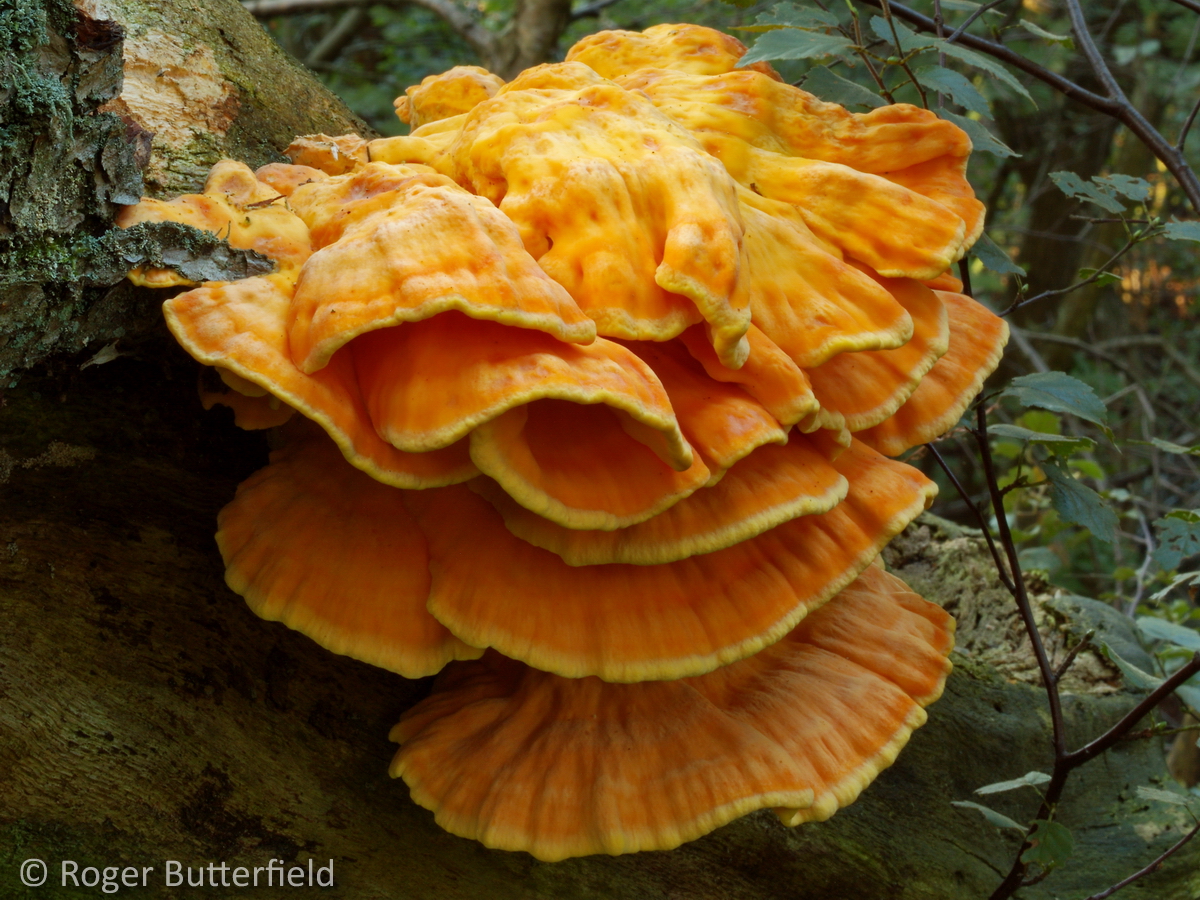Chicken of the Woods
Adaptation
Laetiporus sulphureus is classified as a fungi, so it is immotile. To make up for the fact that it cannot more, this organism has had to adapt to its environment in a few key ways.
 Laetiporus sulphureus has adapted to its environment via
phototropism. It can actually sense the light
coming from above, and will then know that it can send up its
fruiting bodies (also known as basidium), which are the
characteristic orange polypores seen growing on the trunks of
dead trees. The actual act of sending up the fruiting
bodies in response to light is known as
photomorphogensis. It is important to note that
even though you may not be able to see the fruiting bodies of the
organism, the organism is always present. Its white hypae grow and thrive
within the substrate and work year round to decay the material.
When weather and sunlight allow, the organism will send up its fruiting
bodies, and that is when you will know that it is present within the
decaying substrate.
Laetiporus sulphureus has adapted to its environment via
phototropism. It can actually sense the light
coming from above, and will then know that it can send up its
fruiting bodies (also known as basidium), which are the
characteristic orange polypores seen growing on the trunks of
dead trees. The actual act of sending up the fruiting
bodies in response to light is known as
photomorphogensis. It is important to note that
even though you may not be able to see the fruiting bodies of the
organism, the organism is always present. Its white hypae grow and thrive
within the substrate and work year round to decay the material.
When weather and sunlight allow, the organism will send up its fruiting
bodies, and that is when you will know that it is present within the
decaying substrate.
The typical substrate for Laetiporus sulphureus to be
found growing on is a fallen oak tree, or another dead hardwood. The basidium must
grow away from the tree, so that the spores can fall out of the
gills effectively and effciently. The act of actually growing out and
away from the substrate can be classified as negative
thigmomorphogenesis. The fungi senses the stimuli
of the tree via touch, and grows away from it (negatively).

The picture to the right is a great example of how Laetiporus
sulphureus grows away from the substrate it is living off of.
The basidium of Laetiporus sulphureus have also adapted
basidia that ensure the spores get spread evenly and effectively via the
mats of spores on the underside. This all
happens only if the spores are directed facing downward, so that the
gravitational vector of the Earth will pull the spores down and away
from the fruiting body. This adapatation to the gravitation fields of the Earth is known as
gravitropism.
To learn more about NUTRITION of Chicken of the Woods, CLICK HERE!